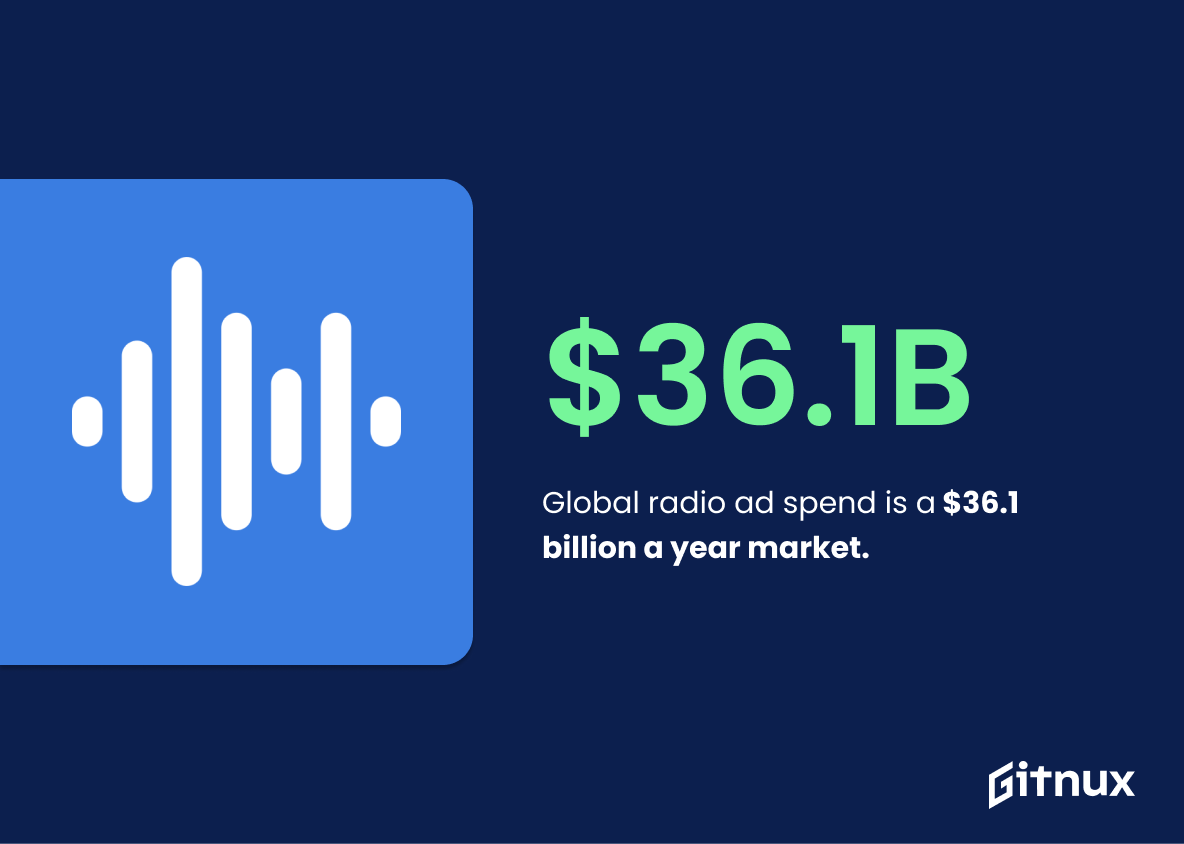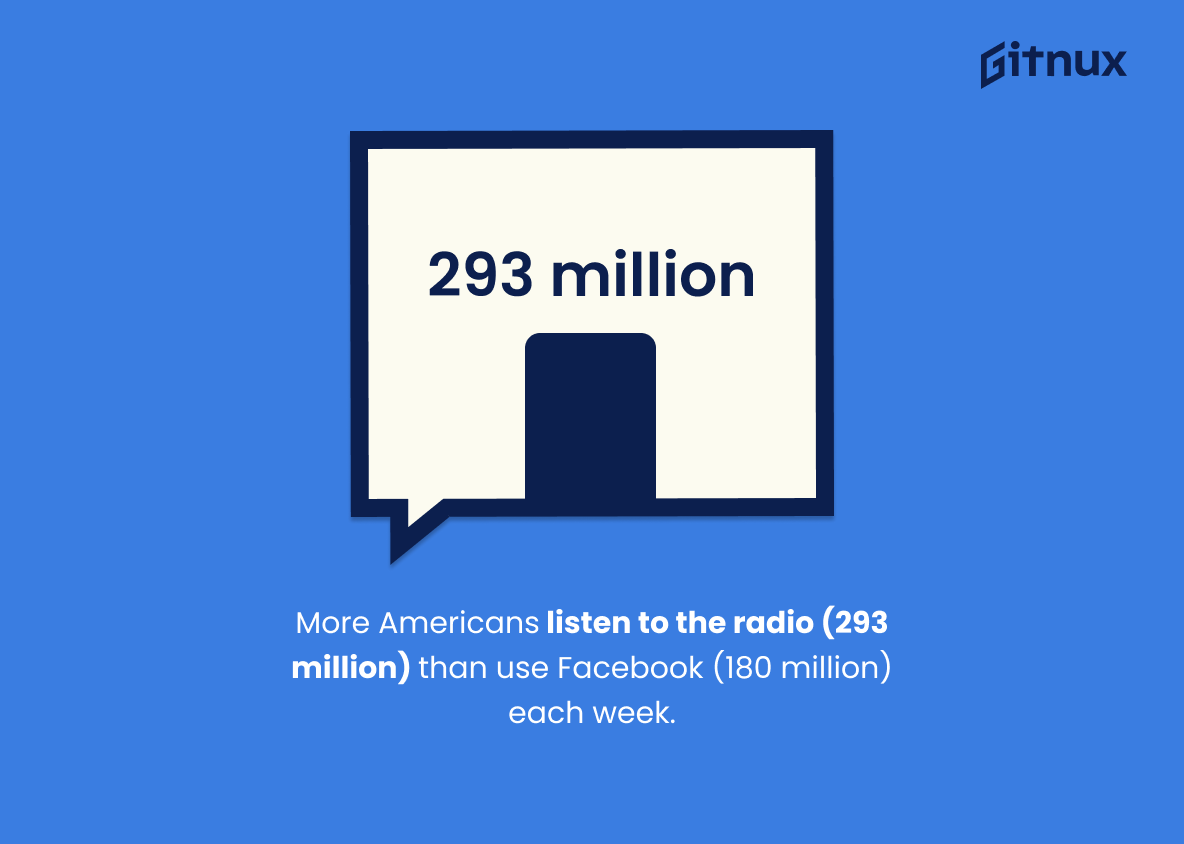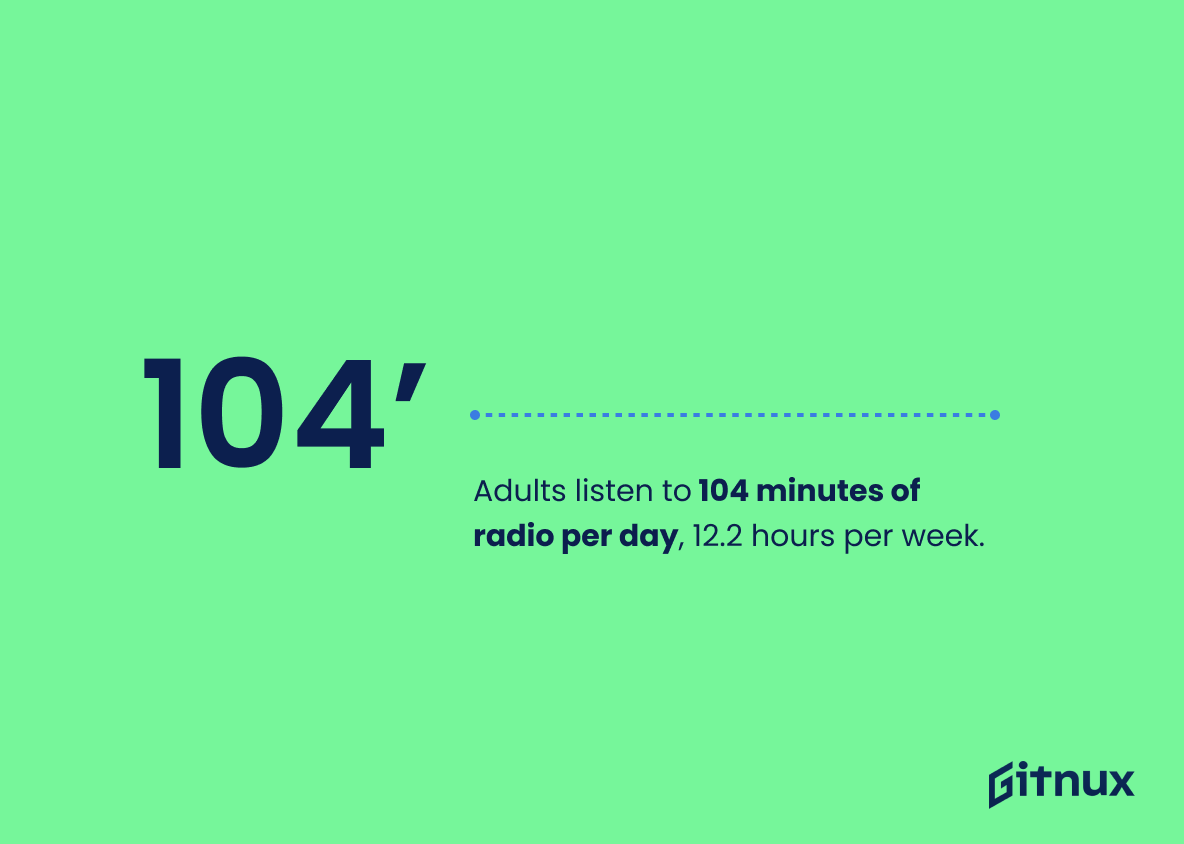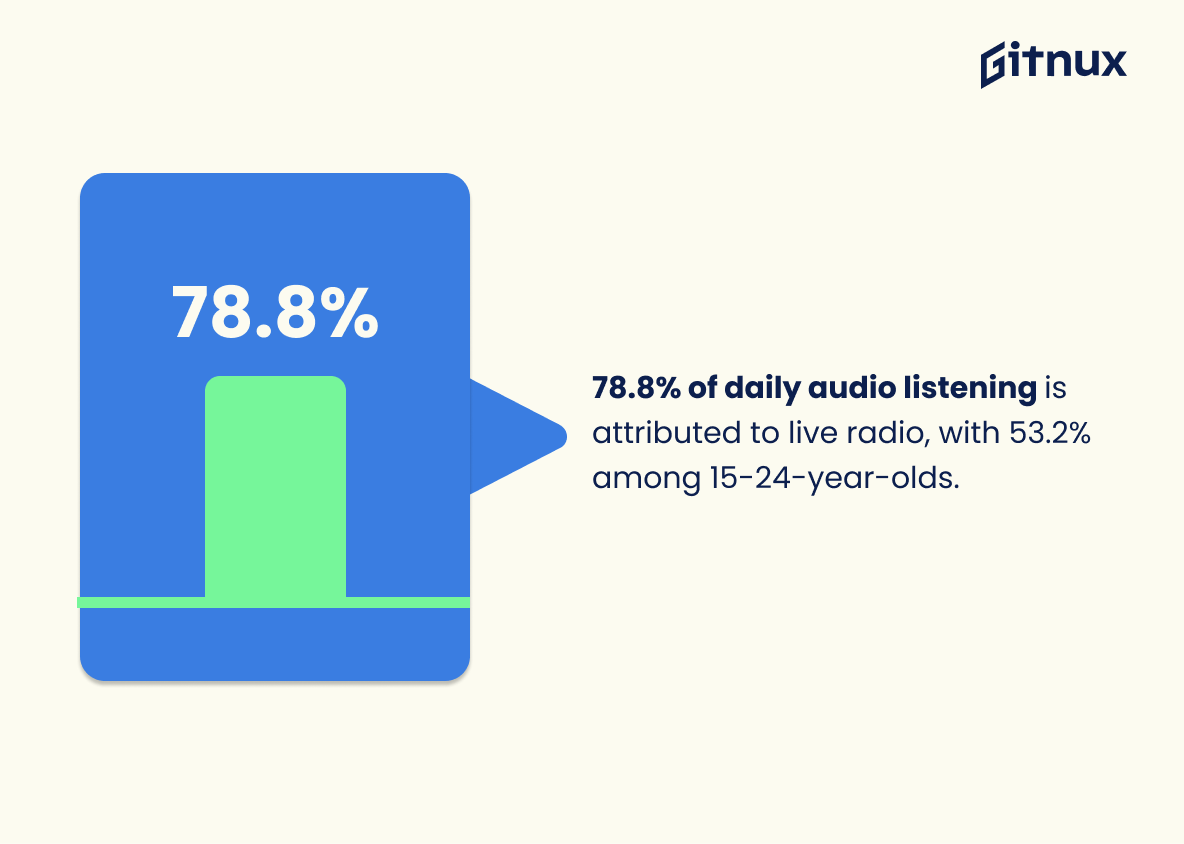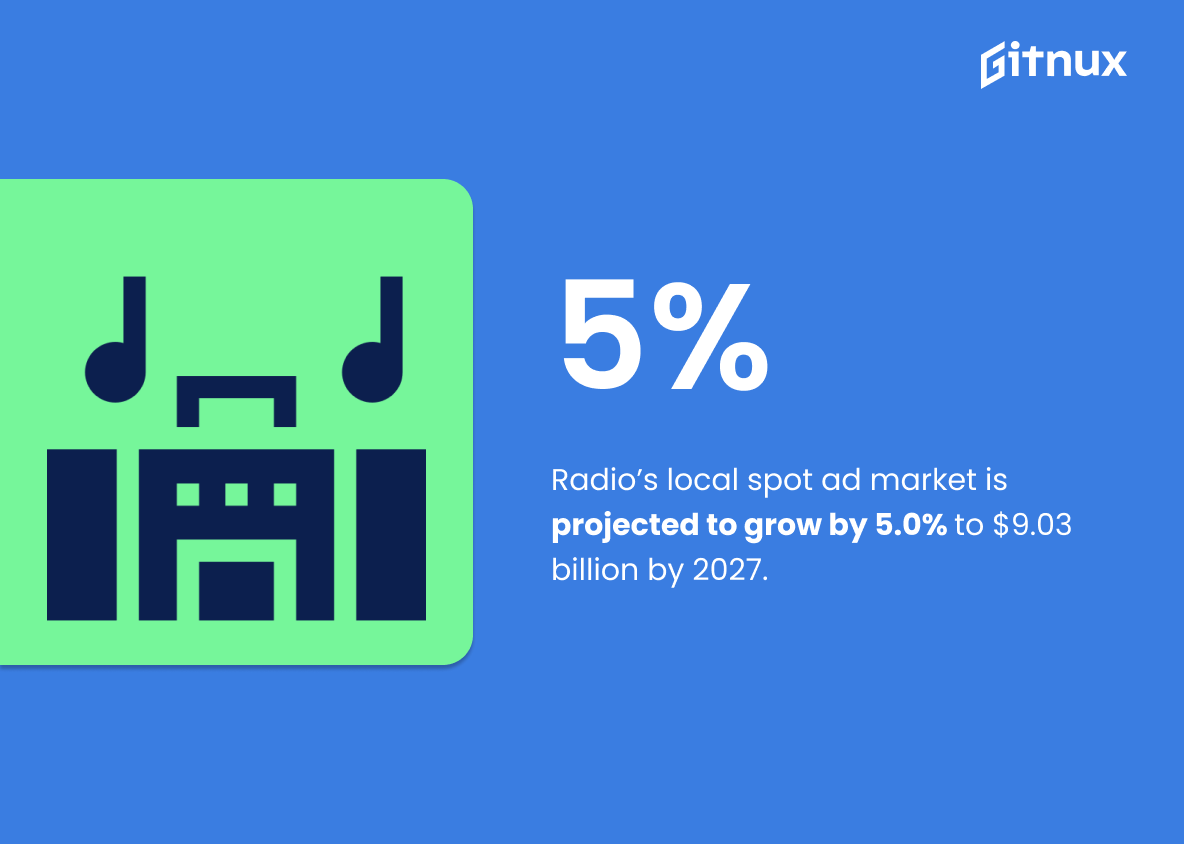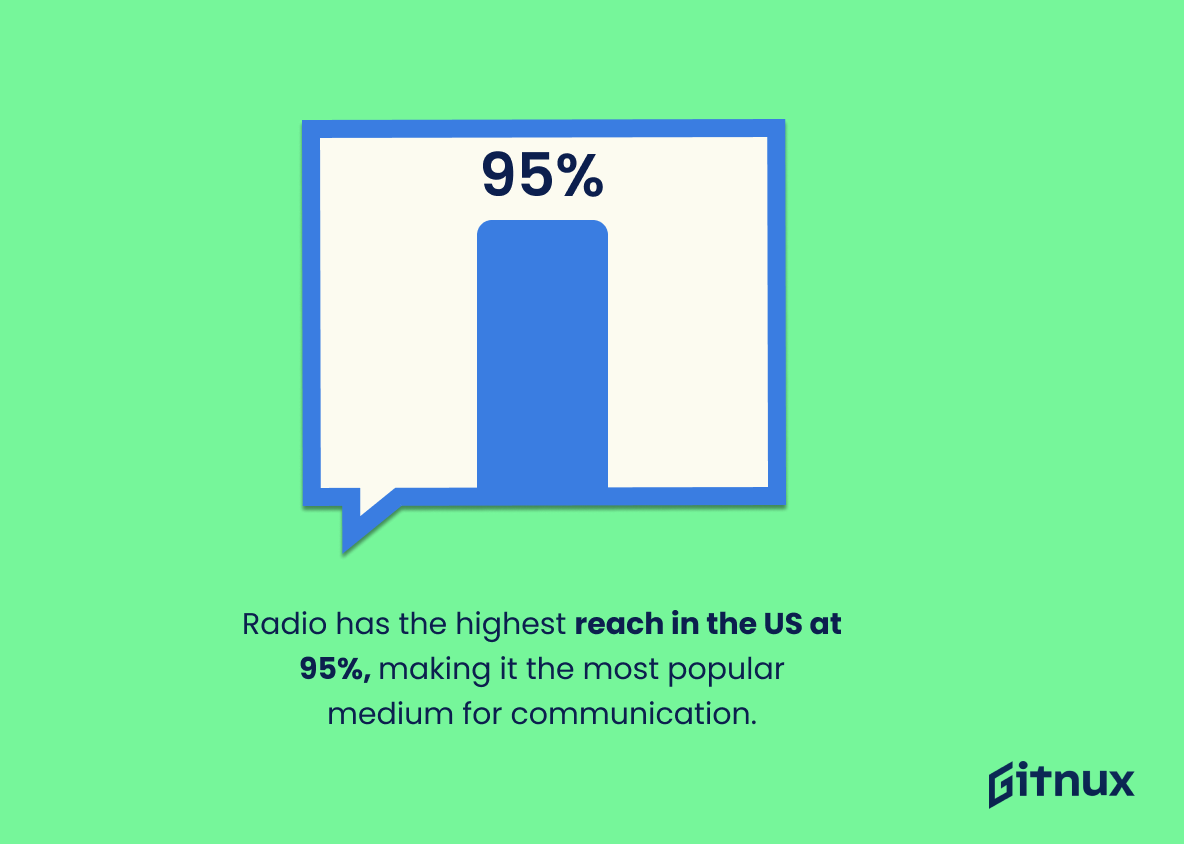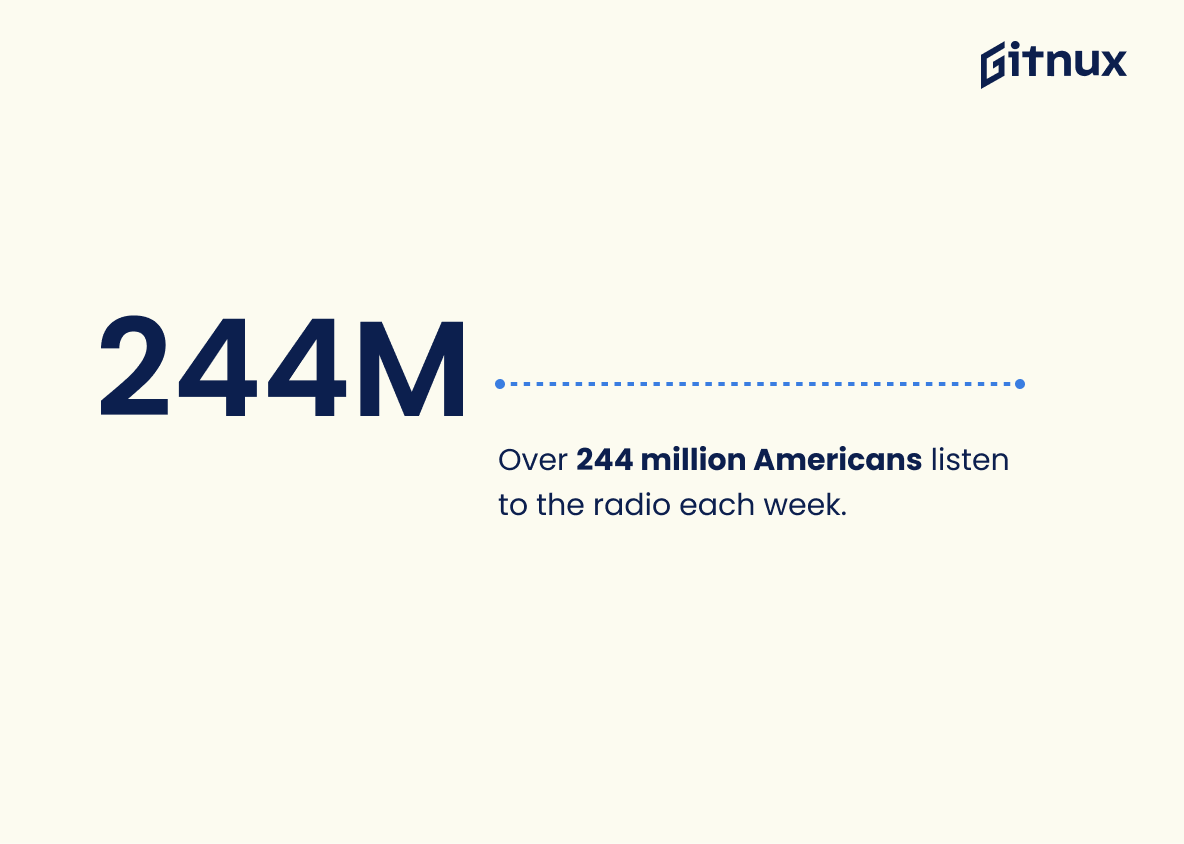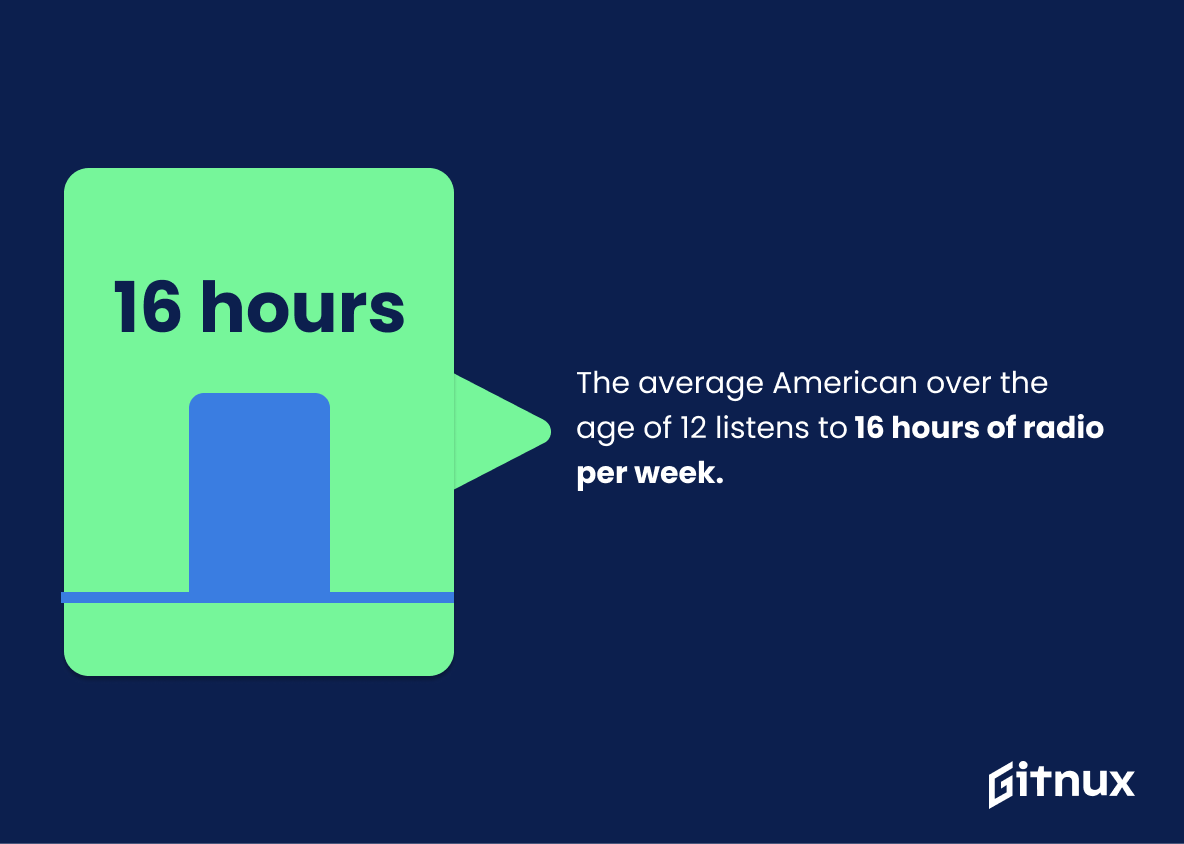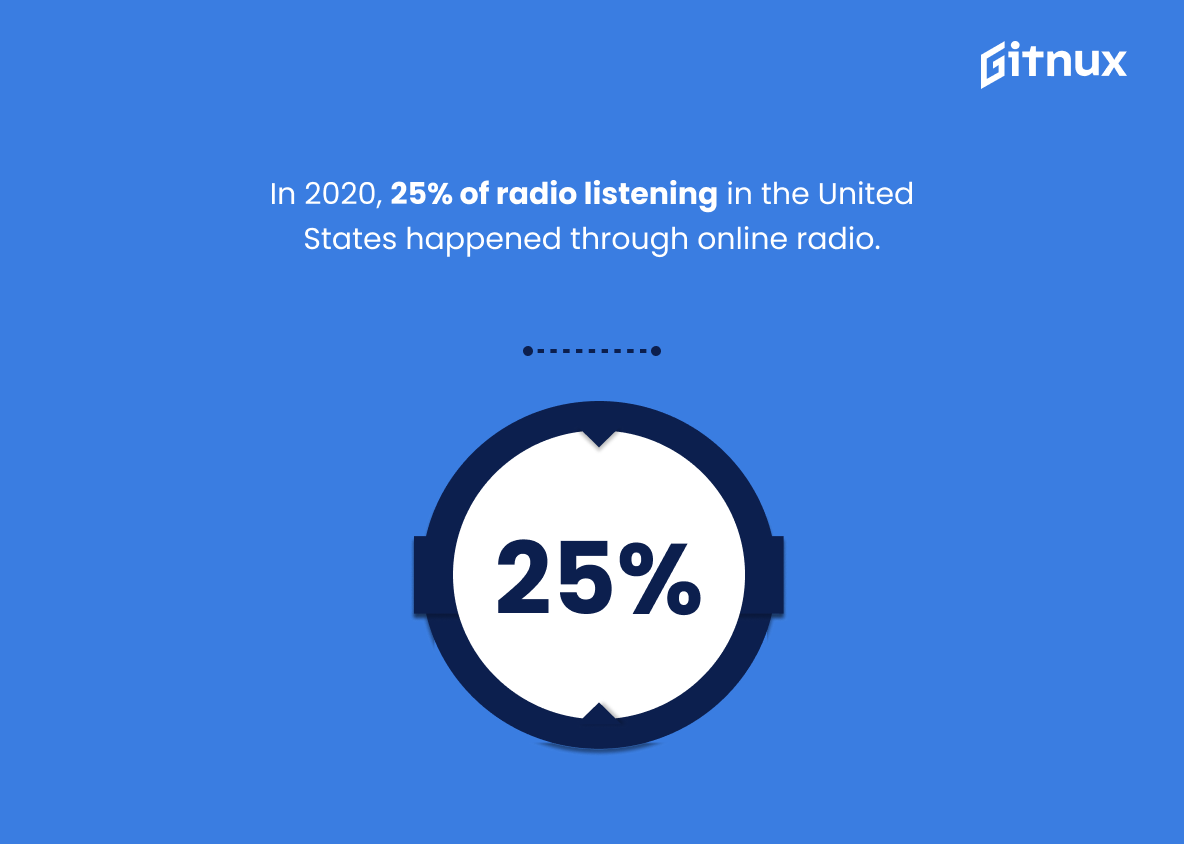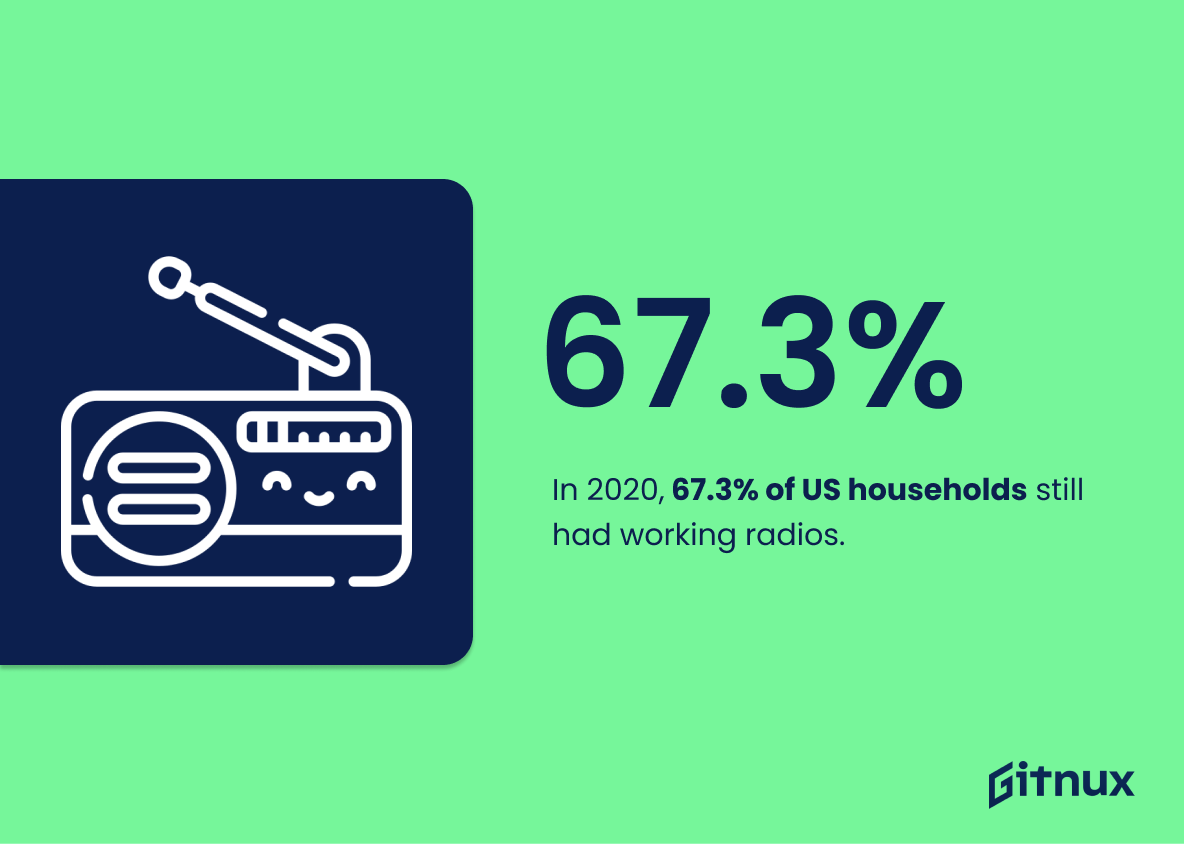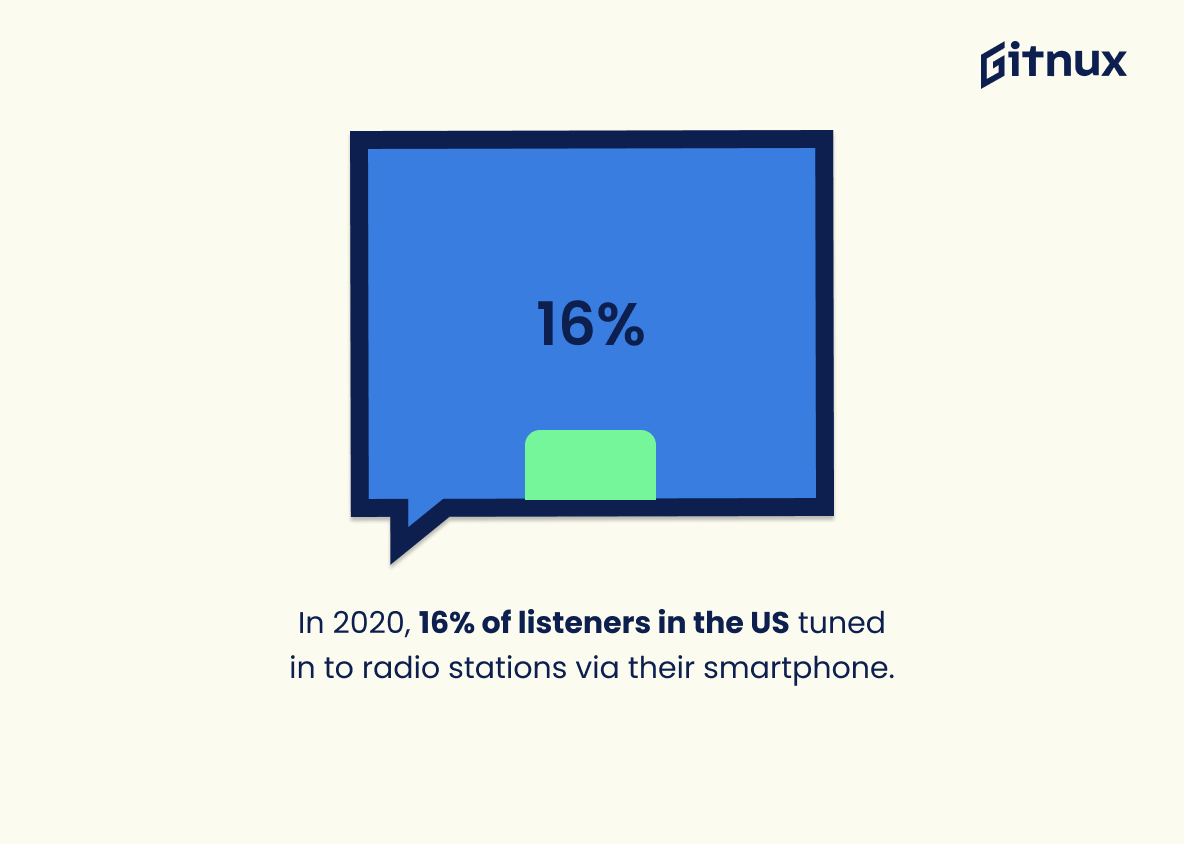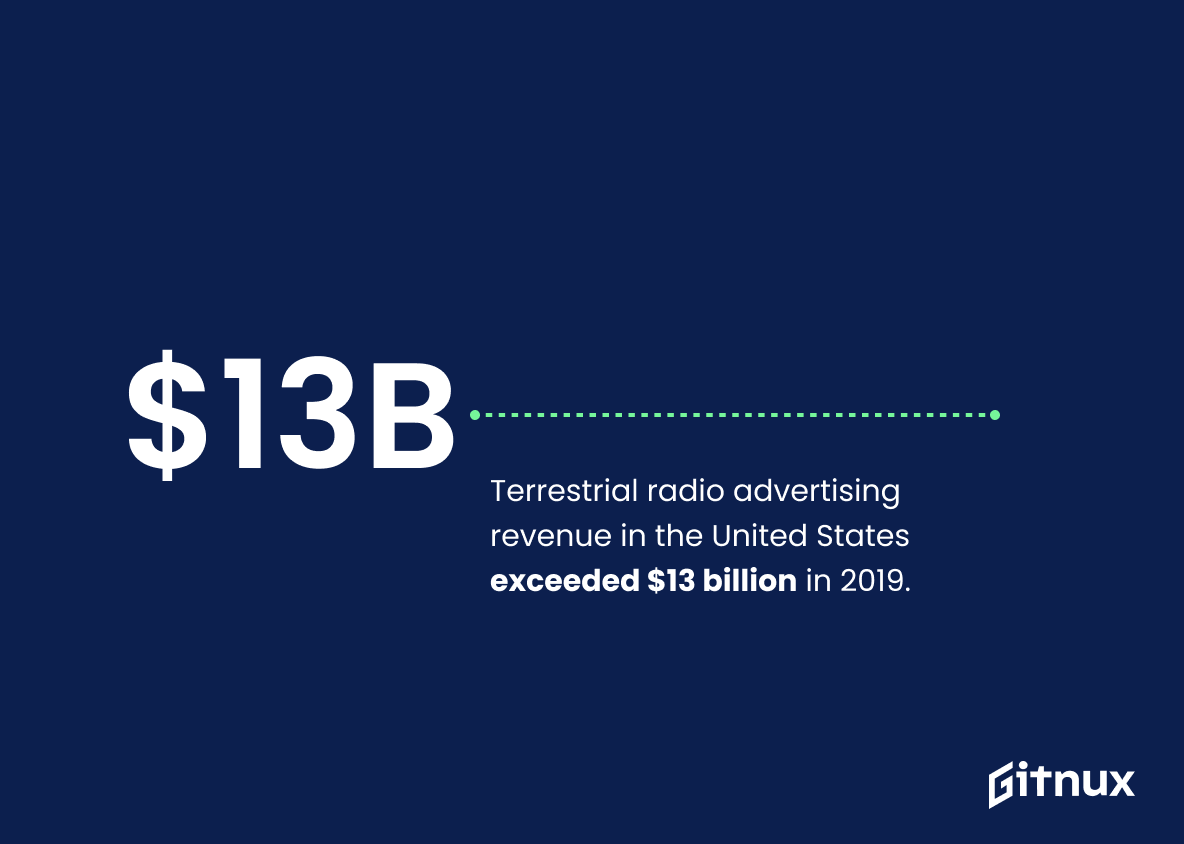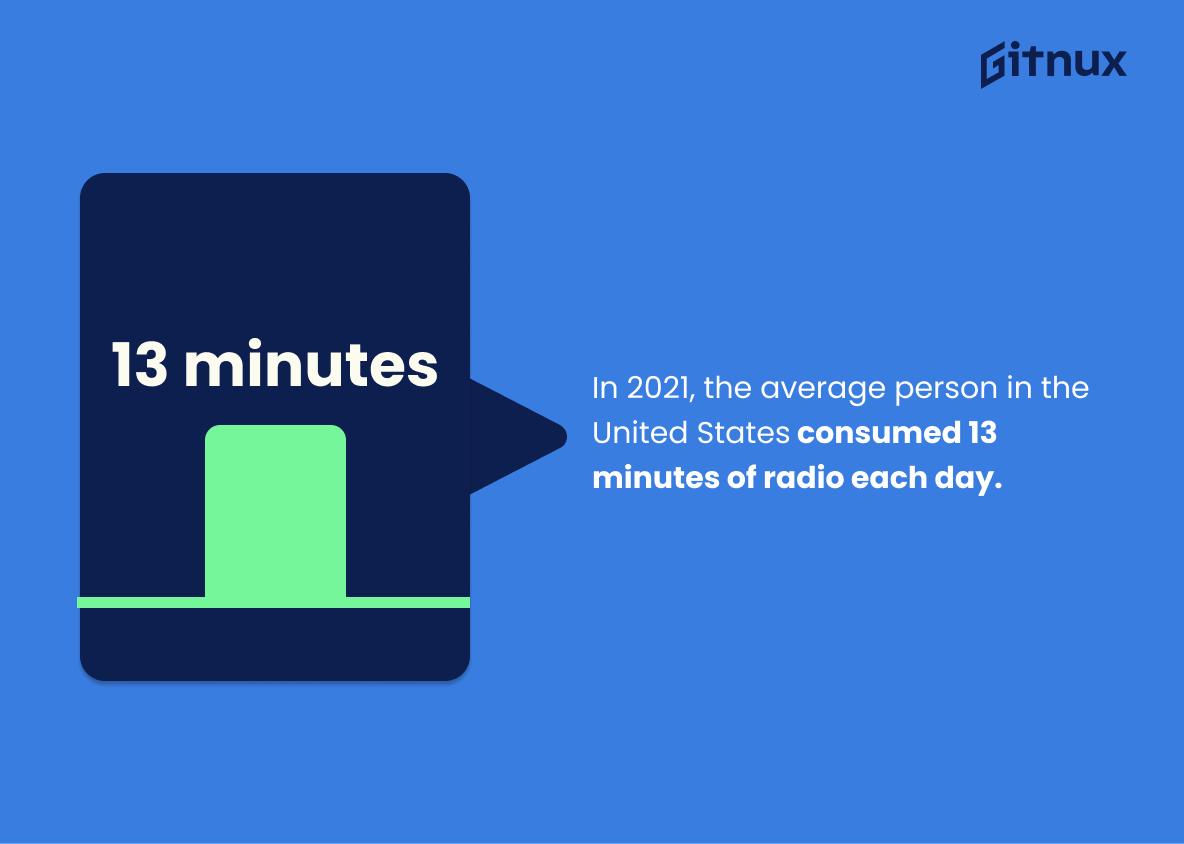Welcome to our blog post about radio statistics. Radio has been a popular form of entertainment for decades, and it continues to be a major source of news, music, and entertainment for people around the world.
In this blog post, we’ll be discussing some of the most interesting radio statistics, including the number of radio stations in the world, the most popular radio formats, and the average time spent listening to radio. We’ll also be looking at how radio has changed over the years and what the future of radio looks like. So, let’s get started.
Radio: The Most Important Statistics
46% of listeners considered purchasing something after hearing a commercial on the radio.
78.8% of daily audio listening is attributed to live radio, with 53.2% among 15-24-year-olds.
Radio: Statistics Overview
Global radio ad spend is a $36.1 billion a year market.
This statistic demonstrates the power of radio as a marketing tool. It shows how much money is being invested in radio advertising, which speaks to its effectiveness and popularity as a medium. It also helps to illustrate the importance of radio as a viable advertising channel in today’s marketplace.
More Americans listen to the radio (293 million) than use Facebook (180 million) each week.
Radio remains a popular form of media consumption even in the age of social media. The information demonstrates that radio still has a large audience, and it is a useful tool for advertisers to reach potential customers. It also provides insight into the media habits of Americans and indicates that radio is still a valuable platform for communication and entertainment.
Adults listen to 104 minutes of radio per day, 12.2 hours per week.
It provides an indication of the level of radio listening among adults. It can be used to inform the content of radio programs, the hours of broadcasting, and the types of advertisements aired. It can also be used to measure the success of radio stations in reaching their target audience.
Radio is one of the most powerful mediums in the US, with a weekly reach of 82.5% among adults and over 15,445 radio stations.
It shows the potential reach of radio as a medium, as well as the level of competition in the radio industry. This data can be used to inform decisions about radio advertising and marketing strategies.
78.8% of daily audio listening is attributed to live radio, with 53.2% among 15-24-year-olds.
Radio is still a popular form of audio listening among younger generations. It demonstrates that radio is not only still relevant, but is also favored by many listeners. This statistic is useful for radio stations and other audio providers to understand the preferences and habits of their target audiences.
46% of listeners considered purchasing something after hearing a commercial on the radio.
This statistic shows that radio advertising is an effective way to reach potential customers and influence their purchasing decisions.
59% of radio listeners showed a strong engagement with radio and its sponsorship messages, and agreed that NPR engages their minds in a more positive way than other media does.
Radio listeners are engaged with radio and its sponsorship messages, and they prefer NPR over other media. This suggests that radio is still an effective medium for advertising and reaching audiences.
Revenue in the Traditional Radio segment is expected to reach $35.65bn by 2027, with an annual growth rate of 0.47%.
This information demonstrates that the traditional radio segment is still growing, despite the emergence of digital streaming services. This indicates that traditional radio is still a viable option for advertisers and broadcasters, and that it will continue to be an important part of the radio industry in the future.
Radio’s local spot ad market is projected to grow by 5.0% to $9.03 billion by 2027.
This shows that radio is still a viable medium for advertising, due to its lower ad cost, local audience, and relatively high return on investment compared to other media.
Radio has the highest reach in the US at 95%, making it the most popular medium for communication.
Radio is a successful medium for communication, which can reach a wide audience, and it is still a popular form of media despite the rise of digital media. This statistic can help marketers to understand which mediums to focus their campaigns on in order to reach their target audience.
Read more about Digital Communication
AM/FM radio reaches the most adult Americans each month, followed by search websites and social media sites.
It shows that AM/FM radio is still the most popular form of media for adult Americans. This indicates that radio is still a powerful and effective medium for reaching a large audience.
Radio consumption has increased across all generations since the start of the COVID-19 pandemic, with the highest increase seen in Gen X (38%).
This statistic shows that radio is still a relevant form of media, even in the digital age. It also highlights the potential for radio to reach a broad range of audiences, regardless of age. This could be beneficial for radio stations, as it could help them to increase their reach and target different generations.
Radio has a large reach across all generations, with the highest reach among Generation X (80.5 million listeners/97% of the population) and Millennials (71.6 million listeners/95% of the population).
Radio is still a popular medium for all generations, and still a viable platform for advertisers to reach their target audiences.
Over 244 million Americans listen to the radio each week.
Radio is still a popular and widely used form of media, and it continues to be a major source of information and entertainment for millions of Americans. This statistic is important to consider when discussing radio statistics, as it demonstrates the reach and influence of radio in the United States.
The average American over the age of 12 listens to 16 hours of radio per week.
Despite the rise of streaming services and other digital media, radio remains a major part of the average American’s life. This statistic is especially relevant to a blog post about radio statistics, as it provides a snapshot of the current state of radio in the United States.
In 2020, 25% of radio listening in the United States happened through online radio.
Online radio is becoming increasingly popular, and radio listeners are increasingly turning to digital platforms to access their favourite content. This is an important trend to consider when discussing radio statistics, as it highlights the need for radio stations to adapt to the changing preferences of their audiences.
In 2020, 67.3% of US households still had working radios.
Despite the rise of other forms of media, radio remains a staple in many households. This is an important reminder that radio is still a viable and relevant form of communication, and should not be overlooked in the modern media landscape.
In 2020, 16% of listeners in the US tuned in to radio stations via their smartphone.
More and more people are turning to their smartphones to access radio stations, suggesting that radio is becoming increasingly mobile-friendly. This is an important trend to note for anyone interested in radio statistics, as it could have implications for the future of radio listening.
Terrestrial radio advertising revenue in the United States exceeded $13 billion in 2019.
t is still a viable and lucrative option for businesses looking to reach their target audiences. It shows that radio is still a major player in the advertising industry, and that it is capable of generating significant revenue for businesses. This is an important point to consider when discussing radio statistics, as it highlights the potential of radio as an effective marketing tool.
In 2021, the average person in the United States consumed 13 minutes of radio each day.
Despite the rise of streaming services and other digital media, radio remains a popular source of entertainment and information for many people. This statistic is an important piece of evidence for anyone looking to understand the current state of radio in the United States.
In the United States, there were 15,273 radio stations in 2019.
Despite the rise of streaming services and other digital media, radio remains a powerful force in the media landscape. It also indicates that radio is still a viable platform for advertisers and marketers to reach their target audiences. This statistic is an important reminder that radio is still a major player in the media industry.
53% of Americans listened to online radio at least once per month in 2020.
More and more people are turning to the internet to access their favorite radio stations and music. This statistic is especially relevant to a blog post about radio statistics, as it provides a snapshot of the current state of the radio industry and how it is adapting to the digital age.
Over 44% of U.S. adults have listened to a podcast in the past month as of January 2020.
Podcasts are no longer a niche form of media, but rather a mainstream form of entertainment that is being embraced by a large portion of the population. This statistic is important to consider when discussing radio statistics, as it demonstrates the impact that podcasts have had on the radio industry.
Public radio stations in the United States generated an estimated $3.3 billion in revenue in 2020.
Radio is still a viable and profitable medium, despite the rise of streaming services and other digital media. This statistic is also a reminder of the importance of public radio stations in providing quality programming to listeners across the country.
In 2019, there were 511 Radio stations broadcasting in Spanish in the United States.
Spanish-language radio is becoming increasingly popular and accessible, providing a platform for Spanish-speaking communities to connect and share their stories. This statistic is a reminder of the importance of radio in providing a voice to those who may not otherwise have one.
AM and FM radio station revenue in the United States reached $12.96 billion in 2019.
Despite the rise of streaming services and other digital media, radio remains a popular and profitable form of media. This statistic is especially relevant to a blog post about radio statistics, as it provides a snapshot of the current state of the radio industry and its financial success.
38% of Americans became aware of new music on the radio in 2020.
Radio is still a major source of music discovery for many Americans, even in the age of streaming services and digital music libraries. This statistic is important for anyone interested in the radio industry, as it demonstrates the continued relevance of radio in the music industry.
News and talk radio make up 23% of radio station formats in the United States.
A large portion of radio stations are dedicated to providing news and talk programming, which is an important part of the radio landscape.
Men aged 25-54 are the largest demographic for listening to sports radio, at 62% in the United States.
This demonstrates that this demographic is the most engaged with sports radio, indicating that it is a key source of entertainment and information for this age group. Furthermore, it suggests that radio stations should focus their efforts on providing content that appeals to this demographic in order to maximize their reach and engagement.
Radio reaches 77% of the U.S. Hispanic population each week.
This demonstrates that radio is an effective medium for reaching this demographic, making it an attractive option for advertisers and marketers looking to target this audience.
In 2019, in-car radio listening remained the dominant location, with 84% of consumers reporting listening to the radio there.
It is still the go-to choice for many consumers. It is a reminder that radio remains a powerful medium for reaching audiences, and that it is still a viable option for advertisers and marketers. This statistic is an important piece of information for anyone looking to understand the current state of radio and its place in the media landscape.
In 2019, 74.4% of US households had a working radio, and 55.2% of people said they listen to AM/FM radio on a daily basis.
Despite the rise of streaming services and other digital media, radio remains a reliable source of information and entertainment for many people. This statistic is especially relevant for a blog post about radio statistics, as it provides a snapshot of the current state of radio in the US.
Conclusion
In conclusion, radio statistics is an important tool for radio stations to measure their success and make informed decisions about their programming. With the right data, radio stations can make sure that their programming is reaching the right audience and making the most of their advertising dollars.
Radio statistics can also help radio stations understand their listeners better, allowing them to tailor their programming to better meet their needs. With the right data, radio stations can ensure that their programming is reaching the right audience and making the most of their advertising dollars.
References
1 – https://www.statista.com/topics/1330/radio/#topicHeader__wrapper
2 – https://iapi.ie/blog/default/jnlrs-radio-and-the-irish-audio-market-report-august-2021
3 – https://www.soocial.com/radio-listening-statistics/
4 – https://www.npr.org/about-npr/987747756/npr-edison-research-debut-their-first-ever-radio-audience-study
5 – https://www.statista.com/outlook/amo/media/music-radio-podcasts/traditional-radio/worldwide#revenue
6 – https://www.spglobal.com/marketintelligence/en/news-insights/research/radio-tv-station-annual-outlook-2022
7 – https://www.businessinsider.com/radio-vs-tv-smartphones-reach-in-us-chart-2017-7?r=US&IR=T
8 – https://www.nielsen.com/insights/2018/how-america-listens-the-american-audio-landscape/
9 – https://www.frankwbaker.com/mlc/media-use-statistics/
10 – https://musicalpursuits.com/radio/
11 – https://www.nielsen.com
12 – https://www.musicbusinessworldwide.com
13 – https://www.statista.com
